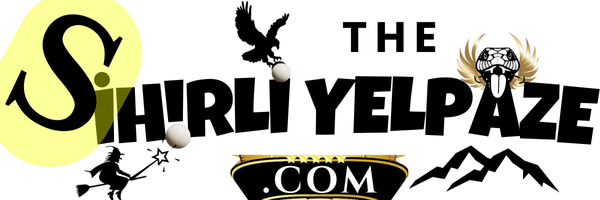Bombanın İcadı Ve Tarihi

🎉Sihirli Yelpaze Sunar🎭 Bomba, içi patlayıcı ve yanıcı madde ile dolu, bir ateşleme düzeni ile donatılmış, madensel küre biçiminde yokedici ateşli bir silahtır. Bombanın Yapısı Bombalar genellikle dört bölümden oluşmaktadır. Bunlar dış kılıf, bombanın havada dengeli gitmesini sağlayan kanatçıklar, tapa ve tapayı ateşlemeye yarayan düzenektir. Bombalar, hedeflere farklı biçimlerde gönderilebilir.
El bombası diye bilinen küçük bombalar, kol gücü ile 30 metre’ye kadar fırlatılabilir. Aynı zamanda, özel tüfeklerle çok daha uzağa fırlatılabilen bombalar da bulunmaktadır. II. Dünya Savaşı’nda, denizaltılara karşı kullanılan su bombaları gemiden suya bırakılıyor ve istenilen derinliğe indiğinde patlatılıyordu. Günümüzde ise, gelişmiş güdümlü su bombaları kullanılmaktadır.
Bir takım bombalar gaz, duman veya zehirli kimyasal maddeler ile doldurulur. Bu tip bombalar, içinde bulunan maddelere göre isimlendirilir. Bunların başlıcaları kimyasal bomba, gaz bombası, sis bombası, biyolojik bomba veya göz yaşartıcı bombadır.
Havadan Bombardıman
Bombaların uçaktan fırlatılması ilk defa I. Dünya Savaşı’nda gerçekleşmiştir. Daha önceleri bombalar bir savaş uçağına yükleniyor ve hedefin üzerindeyken el ile aşağıya atılıyordu. Kanat altlarında veya gövdenin içerisinde ki özel bölmeler de bomba taşıyan savaş uçakları daha sonradan geliştirildi.
 |
| bombanın tarihi |
Uçan Bombalar Ve Roketatarlar
II. Dünya Savaşı’nda Almanlar, bomba sınıfından olabilecek iki tane güçlü silah geliştirdiler. Bunlar ise, V1 bombası ile V2 roketiydi. Uçan bir bomba olan V1, aslında burnun kısmında bir patlayıcı dolu bölmesi olan küçük bir jet uçağıydı. V1, otomatik pilotla hedefe ulaşmaya yetecek kadar yakıtla gönderiliyordu.
 |
| bombanın icadı |
II. Dünya Savaşı’nda Kullanılan Atom Bombası
İlk atom bombası, II. Dünya Savaşı’nın sonlarına doğru Amerika Birleşik Devletleri’nde yapıldı. Nazi Almanya’sında da bu konuda araştırmalar yapıldığı için atom bombasının yapımı çok gizli tutulmuştu. Atom bombası 1945 yılında Japonya’nın iki kentine atıldı. 6 Ağustos’ta Hiroşima’ya atılan ilk bomba yaklaşık 75 bin kişinin, 9 Ağustos’ta Nagasaki’ye atılan ikinci bomba da yaklaşık 39 bin kişinin ölümüne sebep oldu. Atom bombasının bu yıkıcı gücü, uranyum ve plütonyum atomlarının bölünmesi sırasında açığa çıkan enerjiden kaynaklanıyordu.
Makalemizi paylaşmayı ve duygularınızı emoji simgeleriyle ifade etmeyi unutmayın 🤗
🎉Offers a Magic Fan🎭
A bomb is a destructive firearm in the form of a metallic sphere filled with explosive and combustible material, equipped with an ignition device.
Structure of the Bomb
Bombs usually consist of four parts. These are the outer sheath, the fins that keep the bomb balanced in the air, the fuse and the mechanism for firing the fuse. Bombs can be delivered to targets in different formats.
It can be dropped from an aircraft, launched with the aid of a rocket, fired manually, or pre-located at the target and detonated with a timer. It is different with the missile. In bombs, there is no propellant like propellant in a cannonball.
However, the first bombs were similar to cannonballs and were in the form of a metal sphere filled with gunpowder. It was detonated by being ignited by a slowly burning fuse. Such bombs, which were thrown into the enemy trenches by hand or with a mortar, were used for the first time in the 16th century.
Small bombs, known as grenades, can be thrown up to 30 meters with arm power. There are also bombs that can be thrown much farther with special rifles. II. In World War II, water bombs used against submarines were dropped from the ship into the water and were detonated when they reached the desired depth. Today, advanced guided water bombs are used.
Some bombs are filled with gas, smoke or toxic chemicals. These types of bombs are named according to the substances they contain. The main ones are chemical bombs, gas bombs, smoke bombs, biological bombs or tear gas bombs.
Bombs that burn everything around by creating a great heat when fired are also called incendiary bombs. These types of bombs also use highly flammable materials such as thermite and napalm.
Aerial Bombardment
The launching of bombs from airplanes took place for the first time in World War I. Previously, bombs were loaded onto a fighter plane and dropped manually while above the target. Warplanes carrying bombs in special compartments under the wing or inside the fuselage were developed later.
Bombs are dropped directly on the target from these planes, which are called bombers. The first bombers could drop bombs weighing 300 kg. II. At the start of World War II, each plane was now large enough to carry a few bombs of at least 450-500 kg.
history of the bomb
The British-made Lancaster bomber was built with the capacity to carry a 10 thousand kg bomb. Bombs are usually made in the shape of a fish body in order to minimize the resistance of the air, and fins are attached to the tail to reach the target directly. Nowadays, thanks to the firing mechanisms working with radio signals, the bombs can be applied at the height where they can cause the most damage to the target.
Flying Bombs And Rocket Launchers
II. During World War II, the Germans developed two powerful weapons that could be of the bomb class. These were the V1 bomb and the V2 rocket. A flying bomb, the V1 was originally a small jet aircraft with an explosive-filled chamber in the nose. The V1 was sent on autopilot with just enough fuel to hit the target.
When it ran out of fuel on the target, it crashed to the ground and exploded. Germans II. They used about 15,000 V1s in World War II. V2 rockets used alcohol and liquid oxygen as fuel. These rockets are 100 km. It could reach heights and reach a speed of 5,000 kilometers per hour.
We can say that the V2 rockets are the forerunners of today’s long-range missiles. However, today’s guided bombs or missiles, which can be guided until they reach the target after being launched, are much more advanced.
The warplanes of our time are equipped with bombs that reach the target with much more lethal and precise precision.
invention of the bomb
II. Atomic Bomb Used in World War II
The first atomic bomb, II. It was made in the United States towards the end of World War II. The construction of the atomic bomb was kept very secret, as research was carried out on this subject in Nazi Germany as well. Atomic bombs were dropped on two cities in Japan in 1945. The first bomb dropped on Hiroshima on 6 August killed approximately 75,000 people, and the second bomb on 9 August on Nagasaki killed approximately 39 thousand people. This destructive power of the atomic bomb was due to the energy released during the splitting of uranium and plutonium atoms.
The United States developed the hydrogen bomb in 1952, a weapon far more effective and destructive than the atomic bomb. The Soviet Union developed both these bombs later than the United States. He made the first atomic bomb in 1949 and the first hydrogen bomb in 1953. Britain tested the first atomic bomb in 1952 and the first hydrogen bomb in 1957. Then France detonated their first atomic bombs in 1960 and China in 1964. Radioactive rays or radiation emitted to the environment also kill all living things or cause irreparable damage from generation to generation.
Source ; Wikipedia
We have compiled information about the history of the bomb for you.
Do not forget to share your questions and thoughts on this subject, as well as in the comments…
Don’t forget to share our article and express your feelings with emoji icons 🤗





.jpeg)


.jpeg)

.jpeg)



